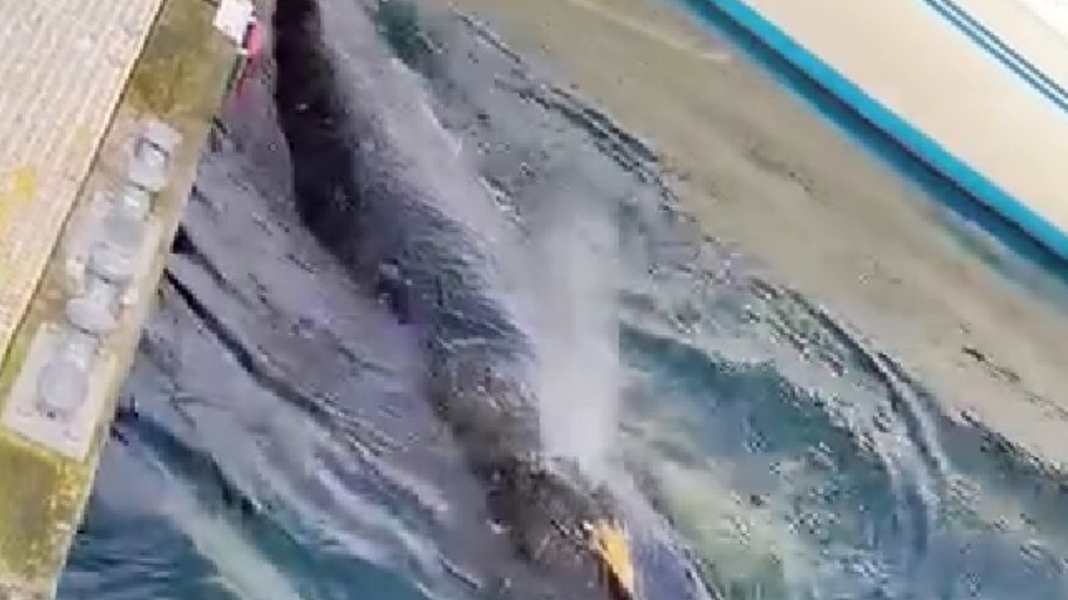Kiel: Another humpback whale sighting in the marina brings new insights

Last Friday at around 11.30 a.m., a humpback whale strayed into the Glücksburg marina. Initially, it was assumed that the visitors were two animals. However, the German Nature and Biodiversity Conservation Union (NABU), which operates a live ticker of humpback whale sightings in the German Baltic Sea on its website, now assumes that it was just one large animal, approximately twelve metres long.
Humpback whale sighting in Glücksburg marina
Sailing instructor Jan Philip Leon from the Hanseatic Yacht School Glücksburg filmed the impressive event and shared the video on social media. You can see not only the suction and waves, but also the large sea creature's back emerging several times. After three or four minutes, the whale then disappeared back into the fjord.
The video of the whale sighting in Glücksburg
At this point, you will find external content that complements the article. You can display and hide it with a click.
Sighting in Kiel marina
The animal, presumably the same one, swam into the Mönkeberg water sports association's marina on Wednesday. The harbour master had reported to NDR Schleswig-Holstein that the animal had swum right past him and then continued on towards Hohwach Bay. Kay Hampel from the association also observed the humpback whale and took a Video recorded.
This is not the first time that such giants have been sighted on the Baltic coast. This is often due to feeding behaviour, for example when schools of fish deviate from their normal routes due to storms. In particular, harbour porpoises and fin whales have been spotted in the region in recent years. The latter are significantly larger than the humpback whales that have now been spotted, which grow to an average length of 13 metres and weigh around 30 tonnes.
In 2016, a young humpback whale travelled for months in the Greifswald Bodden and even collided with a sailing yacht. In general, according to the WWF (World Wide Fund For Nature) There are more than 65,000 humpback whales worldwide with populations in the North Atlantic, North Pacific and also in the southern hemisphere.
